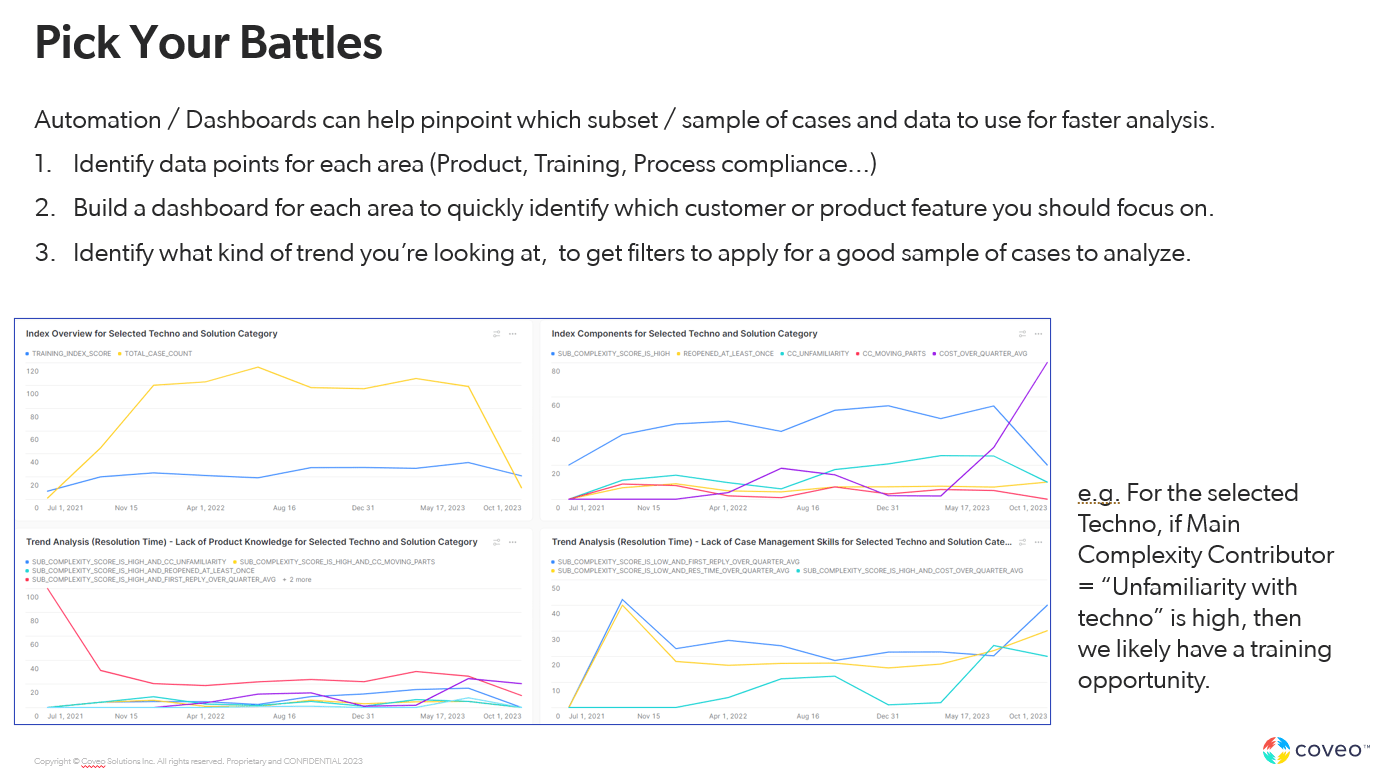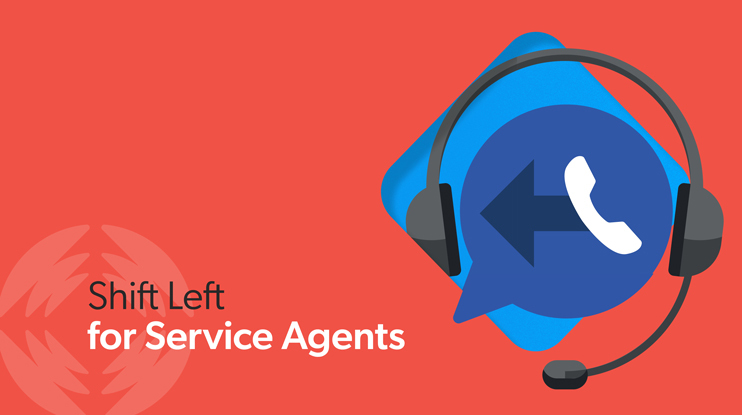While putting the power of resolution in customers’ hands has always been seen as a great cost-cutting measure, a strong shift left strategy isn’t just about lowering costs through self-service. Shift left is about customer support living up to its potential as a growth lever; it’s a strategy that helps show the contribution that the support experience is having on long term revenue.
TSIA reports a strong correlation between the support experience and renewal rates — a better customer support experience makes it more likely a customer will continue to do business with you.

And the truth is, no matter how good your self-service strategy is, assisted support is not going away. There will always be a need for a human in-the-loop, whether it’s to assist with highly complex issues or due to customer preference. The true value of a shift left strategy extends beyond cost reduction through self-service, emphasizing the enhancement of the overall support experience and its contribution to business growth. This means your customer support reps are sitting on untapped insights that could take your shift left strategy to the next level.
Let’s break down the benefits and how-to of a shift left strategy for customer support reps. In the end, you’ll create a continuous feedback loop that doesn’t just benefit them, but also other departments, your customers, and your business at large.

Benefits of a Shift Left CSR Strategy
Shift left for CSRs starts with collaboration with the Product team and Education Services. By working together, these three groups can collectively drive substantial enhancements in product quality, customer experience, and agent proficiency.
Impactful product improvements
What’s better than self-service? Not encountering the issue at all. Product development is complex, requiring trials and testing. While the product team knows how customers are supposed to use the product, your support staff’s customer interactions reveal how they’re really using the product — including struggles, gaps, and preferences.
Your support team provides a valuable liaison between your product team and customer base, enabling them to prioritize improvements to the product that will result in lower support costs. Holding a regular cadence between support and product also ensures that your agents are current on product changes and updates, giving them a better understanding of the product and roadmap.
Upskilled customers
Did you know that about $34 billion in annual licensing waste is generated each year? Think about how much of your product might be being overlooked because your customers aren’t aware of features or the value it can bring to their business.
By collaborating and bringing feedback to the Education Services team, your support reps can provide suggestions and helpful tips on which areas of the product customers struggle with the most.
And when your Education Services team understands where the biggest struggles or misunderstandings lie, they can create the necessary materials to illuminate those problems and upskill customers so it reduces the need to reach out to support.
Better product understanding for faster issue resolution
Education Services not only upskills customers, but also provides CSRs with the essential knowledge, skills, and resources required to promptly and accurately address customer issues.
By giving Education Services feedback on recurring customer issues that could be resolved with training, CSRs can further improve their skills through those newly developed training programs and become more knowledgeable on key topics that are top of mind for customers.
Empower your support staff with the right knowledge from Education Services and collaboration with the Product team, and you create a continuous feedback loop that helps improve your business over time.
Now, while this can happen ad-hoc, to be most effective you need a continuous improvement plan process in place. Here’s how we did it at Coveo.
How to Create a Shift Left CSR Strategy
To better understand how a Shift Left CSR strategy works in the wild, I met with Coveo’s Senior Program Manager of Continuous Improvement, Alexandre Leblanc, to see how Coveo has implemented this program with their support team.
Below is an example of workflow of how it’s implemented at Coveo.

The first step of the process is identifying trends. When those trends are identified and dissected, the right team can be notified to either fix issues upstream and/or ensure agents have the proper information to resolve them faster.
Here’s a summary of the Coveo process:
- Gather feedback and data to identify areas of improvement
(bottom left). - Pick the battles you want to fight.
- Build a sample and perform analysis.
- Provide recommendations to the right team(s).
- Follow-up, rinse and repeat.
Gather Feedback and Data
We have three feedback mechanisms — usage analytics, agent feedback, and opportunity indexes. All three provide a wide coverage to prevent issues from falling between the cracks. Support tickets are, after all, a gold mine of customer intelligence.
We centralize our data via our CRM and pull in specific fields to help us evaluate the context of resolving a ticket. Having AI to help refine and evaluate how much it costs to resolve a case doesn’t hurt, either.

Pick The Battles You Want to Fight
The second step is meeting with leadership as well as some specific members of the team to determine which battles to tackle for the quarter.
To ensure we were having the most productive meetings, we created dashboards with key data points relevant to the discussion. Over time, we’ve improved these dashboards with different graphs to present the data in the most useful manner.

Build Sample and Perform Analysis
Then we build some samples of cases and other data and perform the actual Case Trend Analysis (CTA). We pull a support specialist into the analysis, to help us speed up the process. It helps to have someone who understands the product!

Provide Recommendations to the Right Teams
Once the analysis is completed, not only should we have a list of recommendations but also an understanding of which team those recommendations should go to. Whether it’s the product team, education team, documentation team, another team internally, etc.
As these recommendations are made, we do follow up to measure the impact as much as possible. This isn’t always a reality, but the more we can measure, the better.
Are You Ready to Shift Left?
Shift left is much more than pushing customers into self-service channels. It’s more about analyzing the past to prevent future issues from arising.
Your customer support team is in a prime position to draw from customer interactions, help with analysis of issues, and communicate customer needs with other internal teams.
So as you think about a shift left strategy, your support team will be a key piece.
Listen to the full discussion in the on-demand recording, TSIA Shift-Left in the Wild: Advanced Customer Support.

Dig Deeper
By the time a customer inquiry hits an agent’s desk, that customer has likely tried (and failed) to resolve their issue using self service.
Improve your contact center’s efficiency, the customer satisfaction, and empower agents to do their best work with these six strategies to improve the agent experience in Salesforce.



